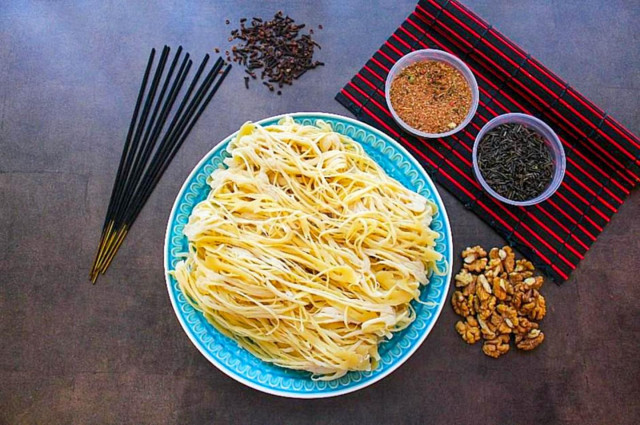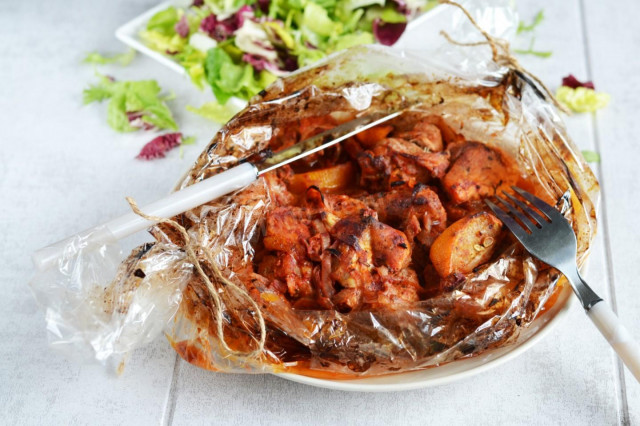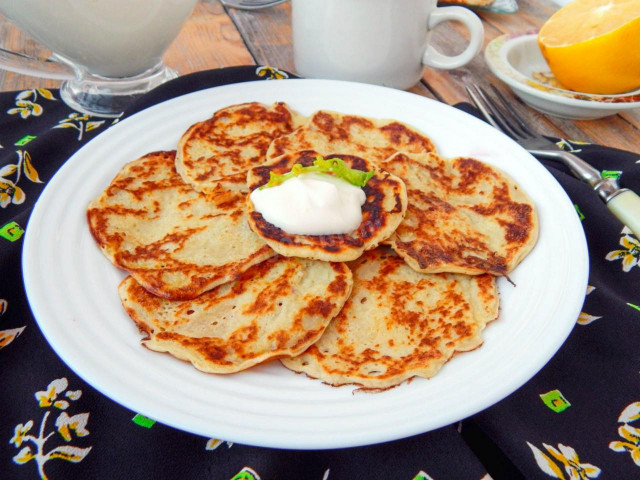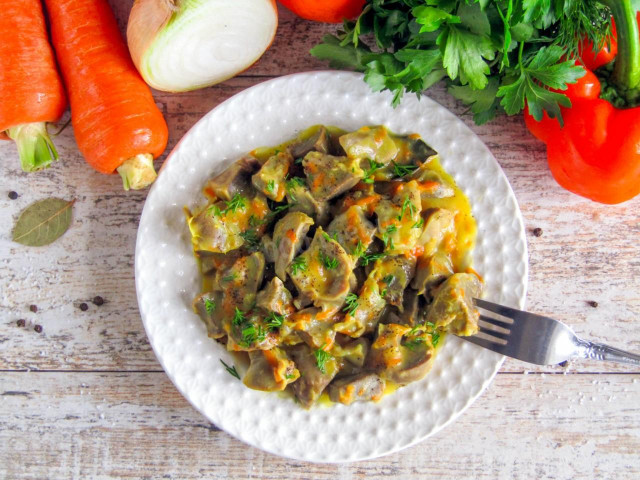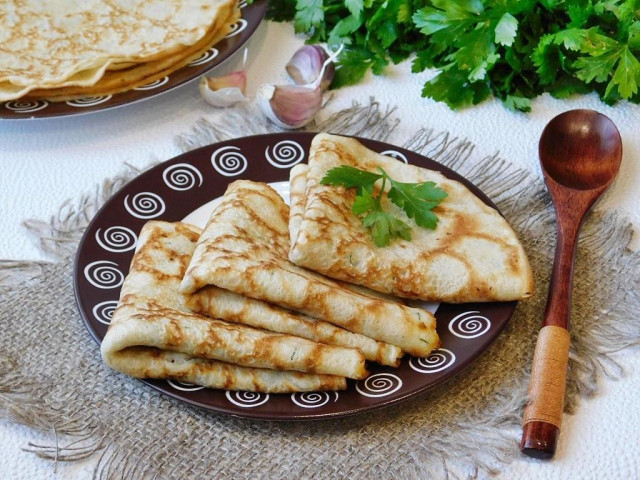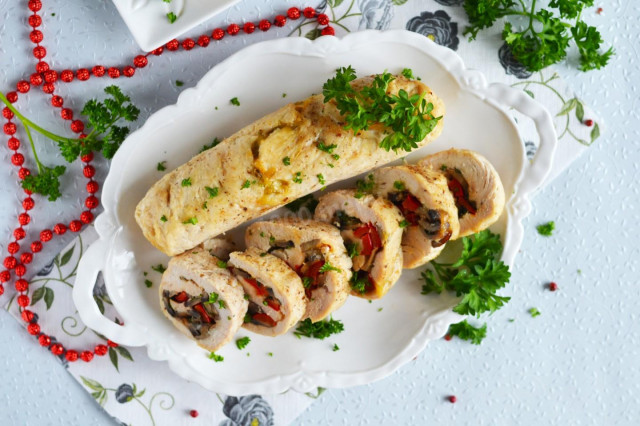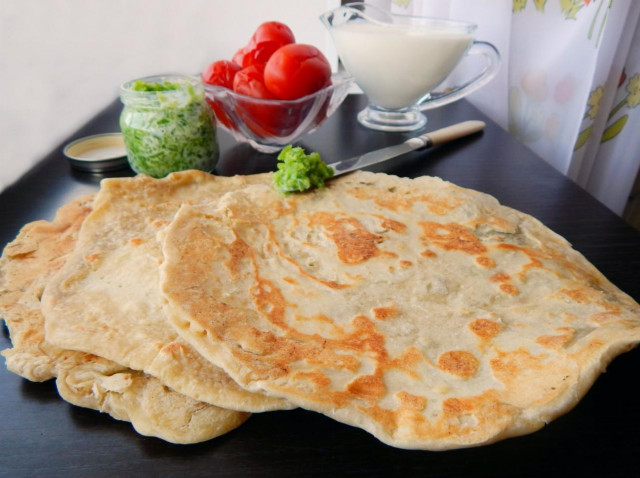Composition / ingredients
Step-by-step cooking
Step 1:
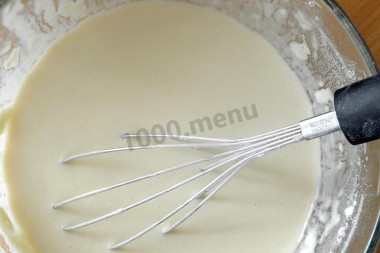
How to make Greek kataifi dough? Prepare the products. Sift flour into a bowl, mix it with salt. Pour in portions of water, stirring the mass thoroughly each time with a whisk. Then beat the eggs into the dough, mix them until they are completely homogeneous. You should get a pretty thin dough, the consistency is about the same as for pancakes.
Step 2:
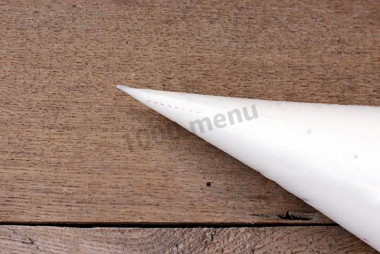
Pour the dough into a pastry bag. It is necessary that the hole is minimal, and the trickle of dough, respectively, is very thin. If you don't have such a bag, then use a thick bag instead, cutting off the very tip of it.
Step 3:
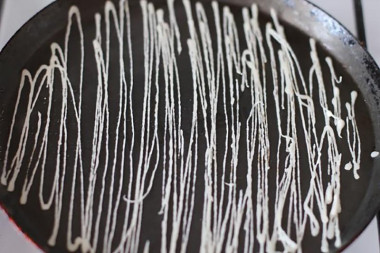
Preheat the pan over medium heat, there is no need to lubricate it with anything. Apply dough threads to the pan with quick movements, hold them for literally 5-7 seconds. As soon as it is possible to pick it up with a spatula, immediately remove it and apply the next batch. It will be most convenient to do this in a non-stick frying pan.
Step 4:
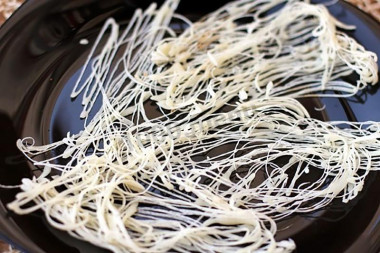
Put the finished dough on a large baking sheet. In its structure, it looks like half-cooked pasta. The test turns out a lot. Store the dough in the freezer, wrapped first in parchment, and then in a bag. Or cook from it immediately, without freezing. Defrost frozen dough using the same technology as puff pastry. It can be stored in the freezer for up to six months.
You can replace part of the flour with starch, then the dough in the finished products will be more crispy.
Be sure to wash the eggs before use, as even the seemingly clean shell may contain harmful bacteria. It is best to use food detergents and a brush.
It is important to sift the flour to saturate it with oxygen. Then the baking will turn out to be airy and will rise well when baking.
For cooking, it is better to use filtered or bottled water that is neutral to taste. If you use tap water, keep in mind that it can give the dish an unpleasant characteristic taste.
Caloric content of the products possible in the composition of the dish
- Chicken egg - 157 kcal/100g
- Egg white - 45 kcal/100g
- Egg powder - 542 kcal/100g
- Egg yolk - 352 kcal/100g
- Ostrich egg - 118 kcal/100g
- Whole durum wheat flour fortified - 333 kcal/100g
- Whole durum wheat flour universal - 364 kcal/100g
- Flour krupchatka - 348 kcal/100g
- Flour - 325 kcal/100g
- Salt - 0 kcal/100g
- Water - 0 kcal/100g

